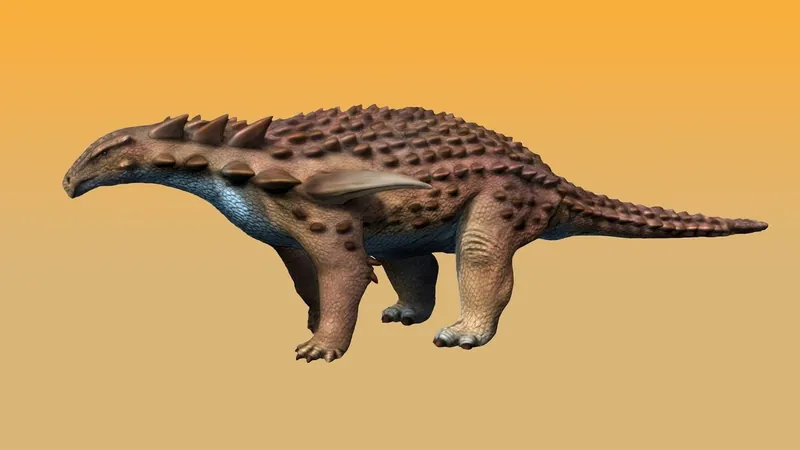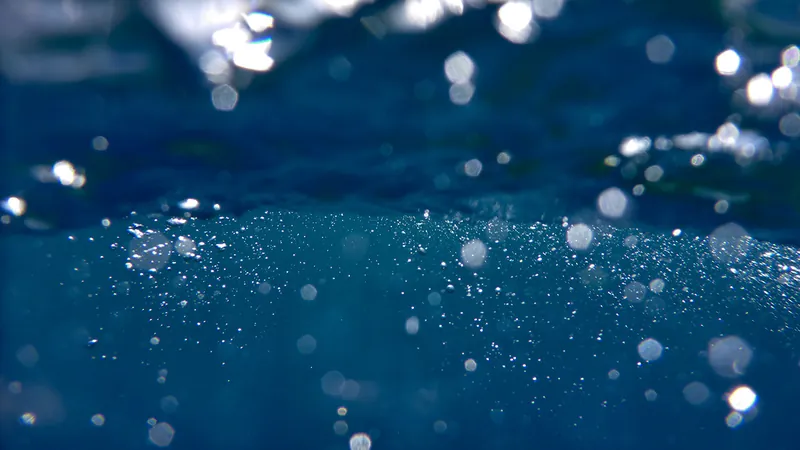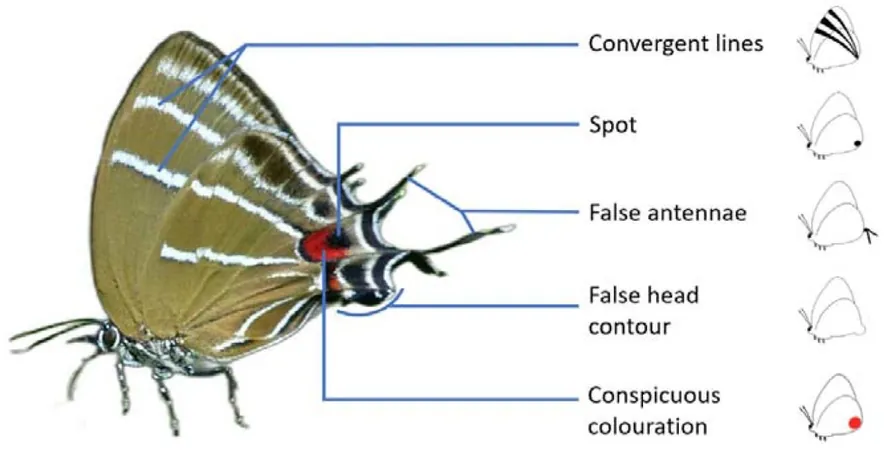
Shocking Discovery: Armored Dinosaur’s Armor More Resilient Than Experts Thought!
2024-11-07
Author: Wei
Introduction
In an astonishing revelation, researchers have found that the armor of a nodosaur—a type of armored dinosaur—could potentially withstand the impact of a high-speed car crash. This groundbreaking insight stems from the discovery of the best-preserved dinosaur fossil ever unearthed.
The Nodosaur Fossil
The fossil belongs to a nodosaur species that roamed the Earth approximately 110 to 112 million years ago during the Early Cretaceous period. Measuring an impressive 18 feet (5.5 meters) in length, this plant-eating dinosaur possessed an extraordinary level of armor protection, which scientists have only recently begun to understand in detail.
Expert Insights
Michael Habib, a biomechanical paleontologist at UCLA and co-author of the study, boldly stated, “This thing could tank an F150 going at speed.” Habib presented these eye-opening findings at the Society for Vertebrate Paleontology's annual meeting on October 30, showcasing the incredible capabilities of the nodosaur's armor.
Historical Context
Historically, researchers have primarily relied on fossilized bony spikes from ancient armored dinosaurs to determine their defensive capabilities. However, keratin—the same tough protein that makes up hair and fingernails—does not preserve well over the millennia, leading to misconceptions about the nature of their armor. For years, paleontologists assumed that these dinosaurs relied solely on bony features for protection, perhaps covered by a keratin layer similar to that of a turtle shell.
The Turning Point: Discovery of Borealopelta
The turning point came in 2017 with the discovery of a remarkably preserved nodosaur fossil named Borealopelta markmitchelli in Alberta, Canada. This fossil was so exquisitely maintained that scientists were able to analyze not only the colors and patterns of the armor but even examine contents from the nodosaur’s last meal! This unprecedented level of preservation offered a closer glimpse at the keratin structures that once covered its bones.
Surprising Findings on Keratin Thickness
What was particularly surprising was the thickness of the keratin sheaths—reaching nearly 6.3 inches (16 centimeters) in some areas—far exceeding the 0.6-inch (1.5 cm) thickness found in modern cattle horns. This robust design suggests that nodosaurs were equipped with a unique, “bulletproof vest” style of armor layered over their bony plates, enhancing their defensive capabilities to extraordinary levels.
Comparative Analysis of Armor
Using comparisons with the armor of modern animals—like porcupine quills—Habib and his team estimated that the nodosaur's armor could withstand tremendous forces, equivalent to over 125,000 joules of energy. That’s a shockingly similar force to what would be experienced in a high-speed automotive collision!
Ecological Insights
This impressive adaptation speaks volumes about the environmental pressures faced by these gentle giants. Habib explains, “Borealopelta lived in a world filled with large, ferocious meat-eating dinosaurs that could deliver powerful bites.” The flexible keratin shields not only protected them from predators but also allowed for easy repair if damaged—comparable to simply trimming a broken nail instead of waiting for a bone to heal.
Intra-Species Combat
Moreover, this robust armor might have been crucial during intra-species combat among males vying for mates. Evolutionary biologist Emma Schachner reveals that the insights gained from this research suggest these armor adaptations were not only for defense against predators but also played a significant role in combat between the dinosaurs themselves.
Implications for Future Research
As this study sheds new light on the defensive strategies of armor-plated dinosaurs, it opens avenues for further examination of other armored species, including horned dinosaurs. The findings imply that many of these creatures likely had similarly formidable keratin sheaths that have been overlooked in previous models.
Conclusion
This remarkable research not only redefines our understanding of nodosaurs but also emphasizes the incredible and dynamic world that existed millions of years ago, proving that nature’s designs often transcend our wildest expectations!




 Brasil (PT)
Brasil (PT)
 Canada (EN)
Canada (EN)
 Chile (ES)
Chile (ES)
 Česko (CS)
Česko (CS)
 대한민국 (KO)
대한민국 (KO)
 España (ES)
España (ES)
 France (FR)
France (FR)
 Hong Kong (EN)
Hong Kong (EN)
 Italia (IT)
Italia (IT)
 日本 (JA)
日本 (JA)
 Magyarország (HU)
Magyarország (HU)
 Norge (NO)
Norge (NO)
 Polska (PL)
Polska (PL)
 Schweiz (DE)
Schweiz (DE)
 Singapore (EN)
Singapore (EN)
 Sverige (SV)
Sverige (SV)
 Suomi (FI)
Suomi (FI)
 Türkiye (TR)
Türkiye (TR)
 الإمارات العربية المتحدة (AR)
الإمارات العربية المتحدة (AR)